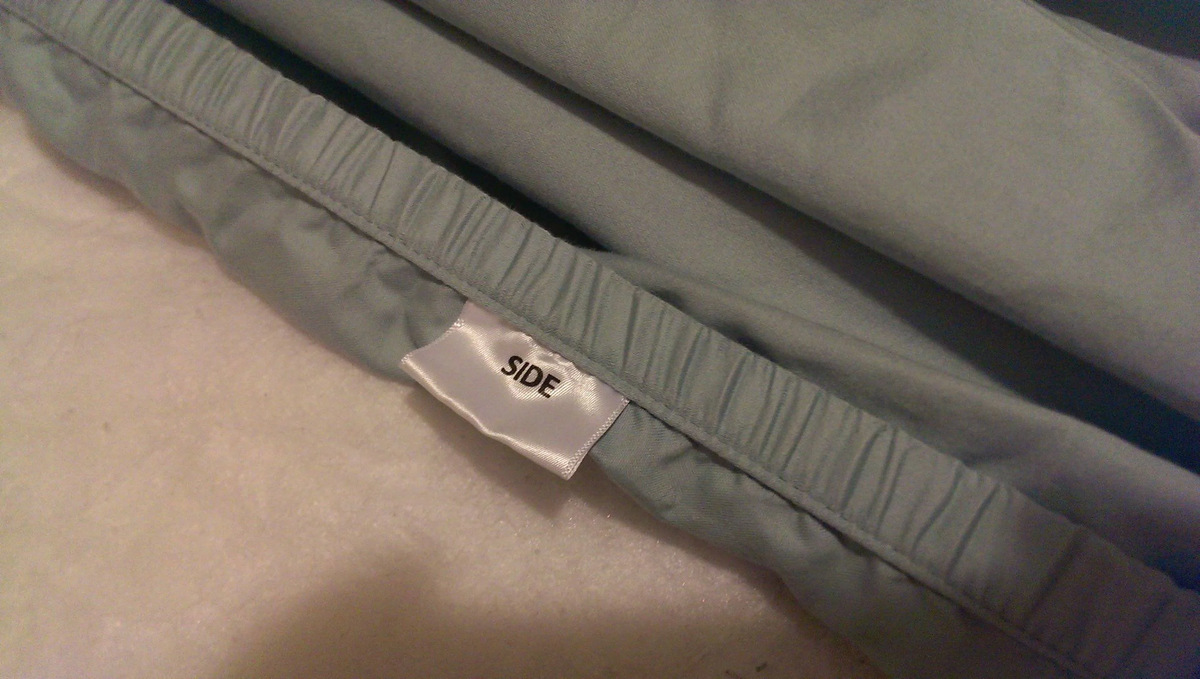

Articles
Where Does The Tag On A Fitted Sheet Go
Modified: October 20, 2024
Discover the correct placement of the tag on a fitted sheet with our informative articles. Find out where the tag should go for ultimate convenience and comfort.
(Many of the links in this article redirect to a specific reviewed product. Your purchase of these products through affiliate links helps to generate commission for Storables.com, at no extra cost. Learn more)
Introduction
Fitted sheets are a staple in households worldwide, providing a snug and secure covering for mattresses. These sheets are designed with elastic edges to ensure a tight fit and prevent them from slipping off during sleep. However, if you’ve ever taken a closer look at a fitted sheet, you may have noticed a small tag attached to it. Have you ever wondered where that tag is supposed to go? In this article, we will unravel the mystery of the tag on a fitted sheet and explore its purpose and placement options.
The tag on a fitted sheet serves a specific purpose, providing essential information about the sheet’s material, care instructions, and size. Although it may seem insignificant, this little tag plays a crucial role in maintaining the longevity and performance of your fitted sheet. By understanding its function, you can ensure that you are making the most out of your bed linens.
Depending on the brand and manufacturer, the tag on a fitted sheet can be found in different locations. It is important to note that there is no one-size-fits-all answer to where the tag should be placed. However, there are a few commonly followed placement options that we will explore in the next section.
Correctly positioning the tag on a fitted sheet is vital for several reasons. First, it helps in identifying the specific size of the sheet, which is particularly useful when you have multiple sheets of different sizes. Secondly, the tag provides valuable care instructions, ensuring that you clean and maintain your fitted sheet correctly. By following these instructions, you can prolong the life of your sheet and enjoy its comfort and quality for years to come.
There are a few misconceptions surrounding the tag on a fitted sheet that we need to address. Some people mistakenly believe that the tag should always be placed at one of the corners. While this can be a common placement option, it’s not the only correct position. As mentioned earlier, different manufacturers may have different placement preferences, so it’s essential to refer to the specific instructions provided by the brand.
Having a tag on a fitted sheet offers several benefits. It provides convenient information that can save you time and effort when caring for your bed linens. Additionally, the tag can serve as a helpful reference point when you need to identify the size and specifications of your fitted sheet. It’s a small detail that can make a big difference in your bedding routine.
Identifying the tag on a fitted sheet is generally straightforward. The tag is typically sewn onto the edge of the fitted sheet, often on the underside or in close proximity to one of the corners. Look for a small piece of fabric with printed or embroidered information on it. Once you locate the tag, pay attention to its placement instructions to ensure that you position it correctly.
In the next section, we will address some frequently asked questions about the tag on a fitted sheet, providing further insight into this often overlooked but essential part of your bedding. By the end of this article, you’ll have a better understanding of the purpose and placement of the tag, helping you make the most out of your fitted sheets.
Key Takeaways:
- The tag on a fitted sheet serves a crucial purpose by providing information about the sheet’s size, material composition, and care instructions. Correctly positioning the tag ensures easy identification and proper maintenance of your bedding.
- Despite common misconceptions, the tag on a fitted sheet is not just decorative; it offers practical benefits such as convenience, longevity, and consistency in your bedding collection. Understanding the tag’s purpose enhances your overall bedding experience.
Read more: What Is A Fitted Sheet
Purpose of the tag on a fitted sheet
The tag on a fitted sheet serves a vital purpose, providing important information and instructions regarding the sheet’s material, care, and size. It may seem like a small detail, but it plays a significant role in ensuring that you can properly care for and maintain your fitted sheets.
One of the primary purposes of the tag is to indicate the size of the fitted sheet. Fitted sheets come in various sizes, such as twin, full, queen, and king. Identifying the correct size is crucial to ensure a proper fit on your mattress. The tag typically indicates the measurements of the sheet, allowing you to quickly determine which sheet is best suited for your mattress size.
In addition to the size, the tag also provides information about the material composition of the fitted sheet. This is particularly important for individuals with specific material preferences or sensitivities. The tag may indicate whether the sheet is made from cotton, polyester, a blend of fabrics, or any other material. Understanding the material composition allows you to make an informed decision when purchasing fitted sheets, ensuring that you choose the right fabric for your needs and preferences.
Care instructions are another critical aspect provided by the tag on a fitted sheet. Different materials require specific care to maintain their quality and prolong their lifespan. The tag may include instructions on how to wash, dry, and iron the fitted sheet, as well as any special handling precautions. These instructions can help you avoid damaging the sheet and enable you to properly care for it, ensuring that it remains in optimal condition for a long time.
Some fitted sheets may also have additional information on the tag, such as the brand name, model, or collection name. Knowing these details can be useful if you plan to purchase matching or coordinating bedding items or if you want to reorder the same sheet in the future.
The purpose of the tag on a fitted sheet goes beyond just being a decorative accessory. It serves as a practical tool that provides essential information and instructions, helping you make informed decisions during the purchasing process and ensuring that you can properly care for and maintain your fitted sheets.
Placement options for the tag on a fitted sheet
When it comes to the placement of the tag on a fitted sheet, there is some variation depending on the brand and manufacturer. While there is no universal standard for tag placement, there are a few common options that you may come across.
One common placement option is to sew the tag onto one of the corners of the fitted sheet. This makes it easy to locate the tag and differentiate between the corners of the sheet. By placing the tag on a corner, you can easily identify the correct orientation of the sheet when making your bed. This can be especially helpful if you have multiple fitted sheets of different sizes or want to quickly determine which corner of the sheet goes where.
Another placement option is to attach the tag along one of the edges of the fitted sheet, typically on the underside. This positioning keeps the tag out of sight when the sheet is on the bed, providing a clean and unobstructed appearance. Some people prefer this placement option as it doesn’t interfere with the overall aesthetic of the bed linens.
It’s also worth noting that some fitted sheets may have more than one tag, especially if they are part of a matching set or collection. In this case, you may find tags sewn onto opposite corners or on multiple edges of the sheet. This additional tagging can provide a consistent look when using matching pillowcases or other coordinating bedding items.
Ultimately, the placement of the tag on a fitted sheet depends on the preferences of the manufacturer and brand. It’s essential to refer to the specific instructions provided by the company to ensure that you position the tag correctly. While there may be some flexibility and personal preference involved in tag placement, following the manufacturer’s recommendations will help ensure that you get the most accurate sizing information and care instructions.
Regardless of the specific placement option, the tag on a fitted sheet serves the same purpose – to provide crucial information and instructions. Whether it’s on a corner or along an edge, locating the tag will enable you to identify the size, material, and care instructions for your fitted sheet, ultimately enhancing your overall bedding experience.
Importance of correctly positioning the tag
Correctly positioning the tag on a fitted sheet may seem like a small detail, but it holds significant importance. Ensuring that the tag is in the right place can offer several benefits and enhance your overall bedding experience.
One of the primary reasons for correctly positioning the tag is to facilitate the identification of the sheet’s size. Fitted sheets come in various sizes, such as twin, full, queen, and king. By placing the tag in the recommended position, you can quickly determine the size of the sheet without having to measure it. This is particularly useful when you have multiple fitted sheets of different sizes, saving you time and effort when making your bed.
In addition to size identification, the tag provides essential care instructions for your fitted sheet. Different materials and fabrics require specific care to maintain their quality and longevity. By following the care instructions indicated on the tag, you can ensure that you clean, wash, and dry your fitted sheet correctly. This can help prevent damage and preserve the sheet’s appearance and durability over time.
Correctly positioning the tag also helps maintain a consistent look and feel for your bedding. When all your fitted sheets have their tags placed in the same location, it creates a visually pleasing and uniform appearance. This can be especially important if you have a matching set or coordinated bedding items that are designed to be used together. A consistent tag placement can contribute to a polished and organized aesthetic in your bedroom.
Another aspect to consider is the practicality of tag placement. Placing the tag on a corner of the fitted sheet, for example, allows for easy identification of the correct orientation of the sheet when making your bed. This can save you time and frustration, especially in cases where you have different sized sheets or multiple sheet sets.
Furthermore, correctly positioning the tag can also contribute to the overall longevity of your fitted sheet. The care instructions provided on the tag are designed to help you maintain the sheet’s quality and prevent unnecessary wear and tear. By following these instructions and handling the sheet accordingly, you can extend its lifespan and continue to enjoy its comfort and performance for years to come.
Overall, correctly positioning the tag on a fitted sheet is essential for various reasons. It allows for easy identification of the sheet’s size, provides important care instructions, maintains a consistent and polished look, and contributes to the longevity of the sheet. By paying attention to the tag’s placement, you can optimize your bedding experience and ensure that your fitted sheets remain in excellent condition.
Common misconceptions about the tag on a fitted sheet
The tag on a fitted sheet may seem like a simple accessory, but there are a few misconceptions surrounding its purpose and placement. Let’s take a closer look at some of the common misconceptions about the tag on a fitted sheet.
One common misconception is that the tag should always be placed at one of the corners of the fitted sheet. While it’s true that many fitted sheets have the tag sewn onto a corner, this is not the only correct placement option. The positioning of the tag can vary depending on the brand and manufacturer. Some sheets may have the tag attached along one of the edges, typically on the underside, to maintain a clean and unobstructed appearance. It’s essential to refer to the specific instructions provided by the brand to determine the correct placement of the tag for your fitted sheet.
Another misconception is that the tag is purely decorative and serves no function beyond adding a small detail to the sheet. In reality, the tag on a fitted sheet has a practical purpose. It provides essential information about the sheet’s size, material composition, and care instructions. By correctly positioning the tag and referring to the information it provides, you can ensure a proper fit, choose the right fabric for your preferences, and properly care for your fitted sheet to prolong its lifespan.
Some people also mistakenly believe that the tag on a fitted sheet can be removed. While it might be tempting to remove the tag for aesthetic reasons or personal preference, it’s not recommended. The tag contains valuable information that can be useful for identifying the sheet’s size and caring for it properly. Removing the tag could result in confusion or difficulty in determining the sheet’s details, especially if you have multiple fitted sheets of different sizes or materials.
It’s important to dispel these misconceptions and recognize the significance of the tag on a fitted sheet. It’s not merely a decorative element but a practical tool that provides valuable information and instructions. By understanding its purpose and following the manufacturer’s recommendations for placement, you can make the most out of your fitted sheets and ensure their optimal performance and longevity.
When putting on a fitted sheet, make sure the tag is placed at the bottom right corner of the mattress. This will help you easily identify the correct orientation of the sheet.
Read more: How To Turn A Flat Sheet Into A Fitted Sheet
Benefits of having a tag on a fitted sheet
The tag on a fitted sheet may seem like a small and insignificant detail, but it offers several benefits that enhance your bedding experience. Let’s explore some of the advantages of having a tag on a fitted sheet.
1. Identification: The tag provides a convenient way to identify the size of the fitted sheet. With different mattress sizes such as twin, full, queen, and king, it can be challenging to determine the correct size just by looking at the sheet. The tag displays the measurements of the sheet, making it easy to match it with the appropriate mattress size.
2. Material information: The tag on a fitted sheet often includes information about the material composition. It specifies whether the sheet is made from cotton, polyester, a blend of fabrics, or any other material. This allows you to choose sheets that align with your preferences and needs, such as selecting breathable cotton sheets for hot climates or hypoallergenic options for sensitive skin.
3. Care instructions: The tag provides essential care instructions for your fitted sheet. Different materials require specific care methods to ensure longevity and optimal performance. The tag may include instructions on washing, drying, ironing, and any special handling precautions. Following these instructions helps you maintain the quality of your sheet and extend its lifespan.
4. Consistency: If you have multiple fitted sheets from the same set or collection, the tag can help maintain a consistent look. The tag often displays the brand name, model, or collection name, allowing you to easily match and coordinate your bedding. This creates a cohesive and visually appealing aesthetic in your bedroom.
5. Convenience: Having a tag on a fitted sheet provides convenience and saves time. When you need to replace or reorder the same sheet or other coordinating bedding items, the tag serves as a quick reference. It eliminates the need for measurements or guesswork, allowing you to easily find the exact sheet you desire.
6. Longevity: Following the care instructions provided on the tag helps prolong the lifespan of your fitted sheet. By understanding how to properly care for and handle the sheet, you can prevent damage, minimize wear and tear, and ensure that it retains its quality over time. This extends the longevity of your bedding investment.
Overall, the tag on a fitted sheet offers practical benefits that enhance your bedding experience. It allows for easy identification of the sheet’s size, provides information about material composition, offers care instructions for proper maintenance, ensures consistency in your bedding collection, and saves time when replacing or reordering sheets. By utilizing the information provided by the tag, you can enjoy comfortable, well-maintained fitted sheets that enhance the look and feel of your bedroom.
How to identify the tag on a fitted sheet
Identifying the tag on a fitted sheet is a relatively simple process. The tag serves as a valuable source of information, providing details about the sheet’s size, material composition, and care instructions. Here are the steps to identify the tag on a fitted sheet:
- Look for a small piece of fabric: The tag is typically a small piece of fabric that is sewn onto the fitted sheet. It can be located on the top side, bottom side, or along one of the edges of the sheet.
- Check the corners: One common placement option for the tag is on one of the corners of the fitted sheet. Gently lift the corner of the sheet and examine the edges for the presence of a tag. The tag may be sewn onto the edge of the corner or the fabric adjacent to it.
- Inspect the edges: If you don’t find the tag on any of the corners, check the edges of the fitted sheet. The tag might be attached along one of the edges, typically on the underside of the sheet. Carefully run your fingers along the edge of the sheet, feeling for any small fabric tag that might be sewn onto it.
- Look for printed or embroidered information: The tag itself will have printed or embroidered information. It may include details such as the sheet’s size, material composition, care instructions, brand name, or collection name. Take a closer look at the tag to read the provided information.
- Refer to the manufacturer’s instructions: If you’re having difficulty locating the tag or need more guidance on its placement, it’s always best to refer to the specific instructions provided by the manufacturer. The manufacturer’s guidelines will offer clarity on where the tag is typically located and any specific details related to its placement on the fitted sheet.
By following these steps, you should be able to easily identify the tag on a fitted sheet. Once located, you can refer to the information provided on the tag to determine the size, material, and care instructions for your fitted sheet. This knowledge will help you properly care for and maintain your sheet, ensuring its longevity and optimal performance.
Frequently asked questions about the tag on a fitted sheet
The tag on a fitted sheet can sometimes raise questions, especially if you’re unfamiliar with its purpose and placement options. Here are some frequently asked questions about the tag on a fitted sheet, along with their answers:
- Why is there a tag on a fitted sheet?
The tag on a fitted sheet serves a practical purpose. It provides important information about the sheet’s size, material composition, and care instructions. By referring to the tag, you can easily identify the correct size sheet for your mattress, select the right fabric for your preferences, and properly care for your fitted sheet to prolong its lifespan. - Where is the tag supposed to go on a fitted sheet?
The specific placement of the tag on a fitted sheet can vary depending on the brand and manufacturer. While some sheets have the tag sewn onto one of the corners, others may have it attached along an edge, typically on the underside of the sheet. It’s important to refer to the manufacturer’s instructions for the recommended placement for your specific fitted sheet. - Can I remove the tag from a fitted sheet?
While it may be tempting to remove the tag for aesthetic reasons, it is not recommended. The tag provides important information that can help you identify the size, material, and care instructions for your fitted sheet. Removing the tag could result in confusion or difficulty in determining these details, particularly if you have multiple fitted sheets or plan to reorder the same sheet in the future. - Are the care instructions on the tag necessary?
Absolutely! The care instructions provided on the tag are designed to help you properly care for and maintain your fitted sheet. Different materials require specific cleaning methods, and following these instructions can prevent damage and ensure longevity. Proper care and maintenance will help your fitted sheet retain its quality and performance over time. - Do all fitted sheets have tags?
Although most fitted sheets come with tags, there may be some exceptions. Some manufacturers may choose not to include a tag on their fitted sheets. However, the majority of fitted sheets on the market will have a tag that provides important information for your convenience.
If you have further questions about the tag on a fitted sheet, it’s recommended to consult the manufacturer’s instructions or reach out to the brand’s customer support. They can provide specific details and address any additional inquiries or concerns you may have about the tag on your fitted sheet.
Conclusion
The tag on a fitted sheet may seem like a small and insignificant detail, but it serves a vital purpose in providing essential information and instructions. Understanding the purpose and placement options of the tag can greatly enhance your bedding experience.
By correctly positioning the tag, you can easily identify the size of your fitted sheet, choose the right material for your preferences, and properly care for the sheet to prolong its longevity. The tag eliminates the guesswork and saves you time when it comes to selecting and maintaining your fitted sheets.
Despite common misconceptions, the tag on a fitted sheet is not merely decorative but rather a practical tool that offers convenience and valuable information. By following the care instructions provided on the tag, you can ensure the sheet remains in optimal condition and retains its performance over time. Additionally, maintaining a consistent tag placement can contribute to a visually pleasing aesthetic in your bedroom.
Familiarizing yourself with the tag on a fitted sheet allows you to make informed decisions when purchasing new bedding and facilitates proper care and maintenance of your sheets. The tag is a small detail that can make a big difference in your overall bedding experience.
So, the next time you make your bed or go sheet shopping, don’t overlook the tag on your fitted sheet. Take the time to read and understand the information it provides. By doing so, you can ensure a comfortable, well-maintained, and visually pleasing bedding environment.
Frequently Asked Questions about Where Does The Tag On A Fitted Sheet Go
Was this page helpful?
At Storables.com, we guarantee accurate and reliable information. Our content, validated by Expert Board Contributors, is crafted following stringent Editorial Policies. We're committed to providing you with well-researched, expert-backed insights for all your informational needs.

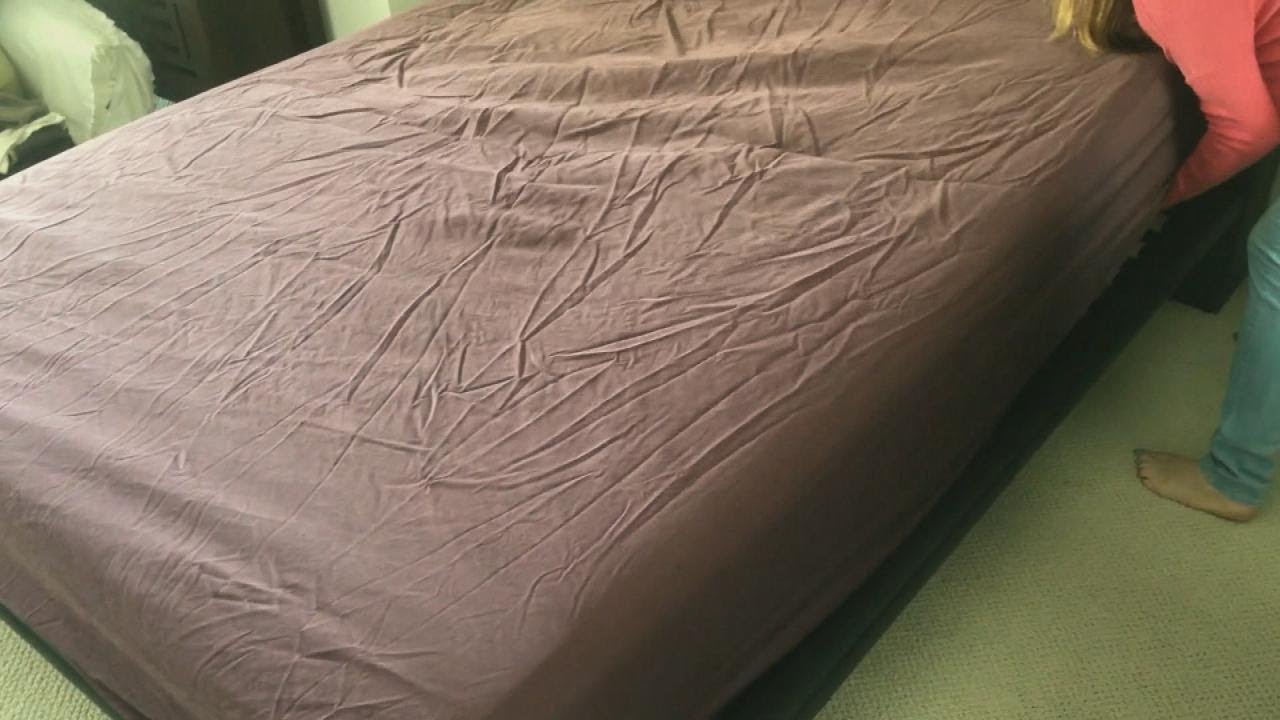


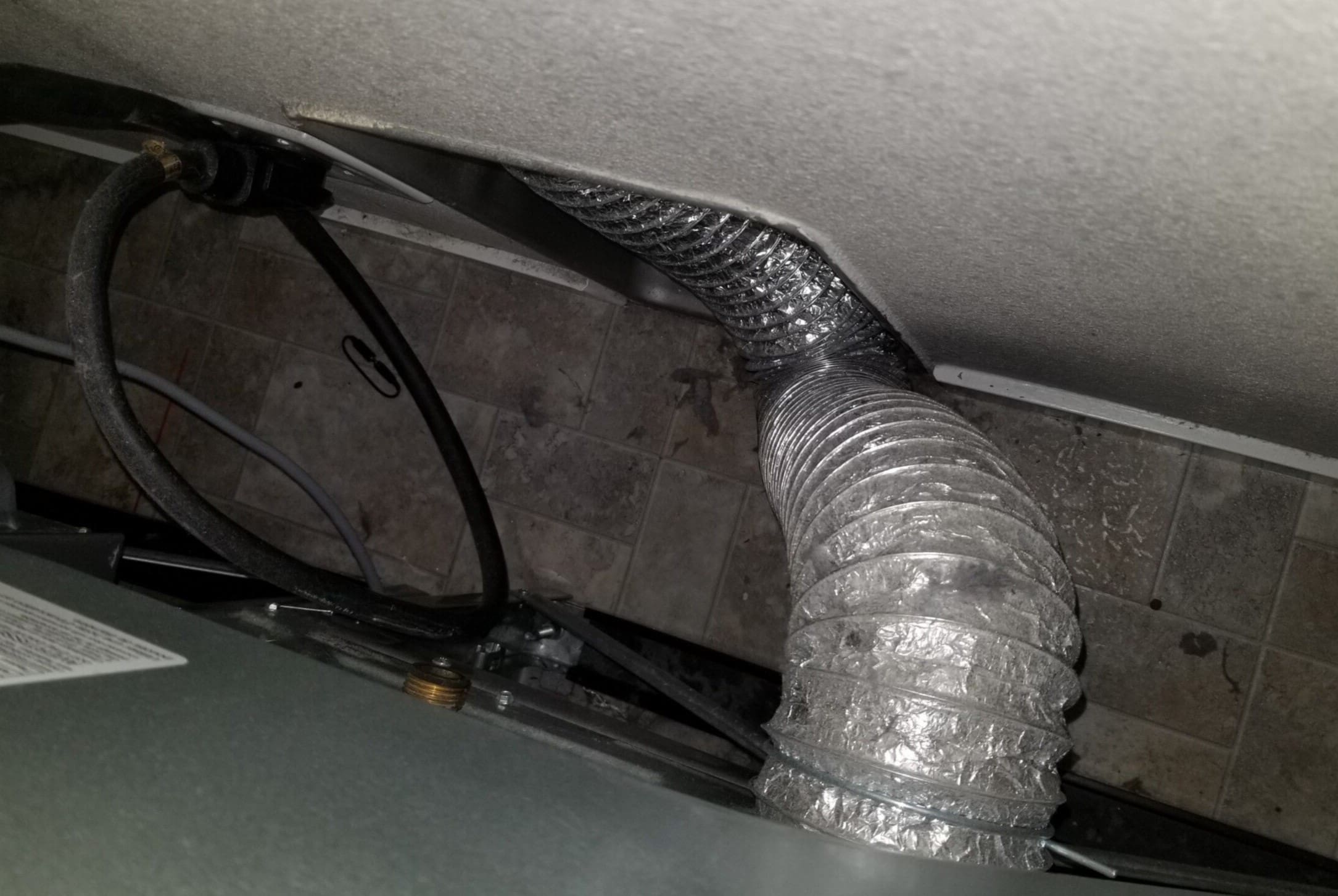
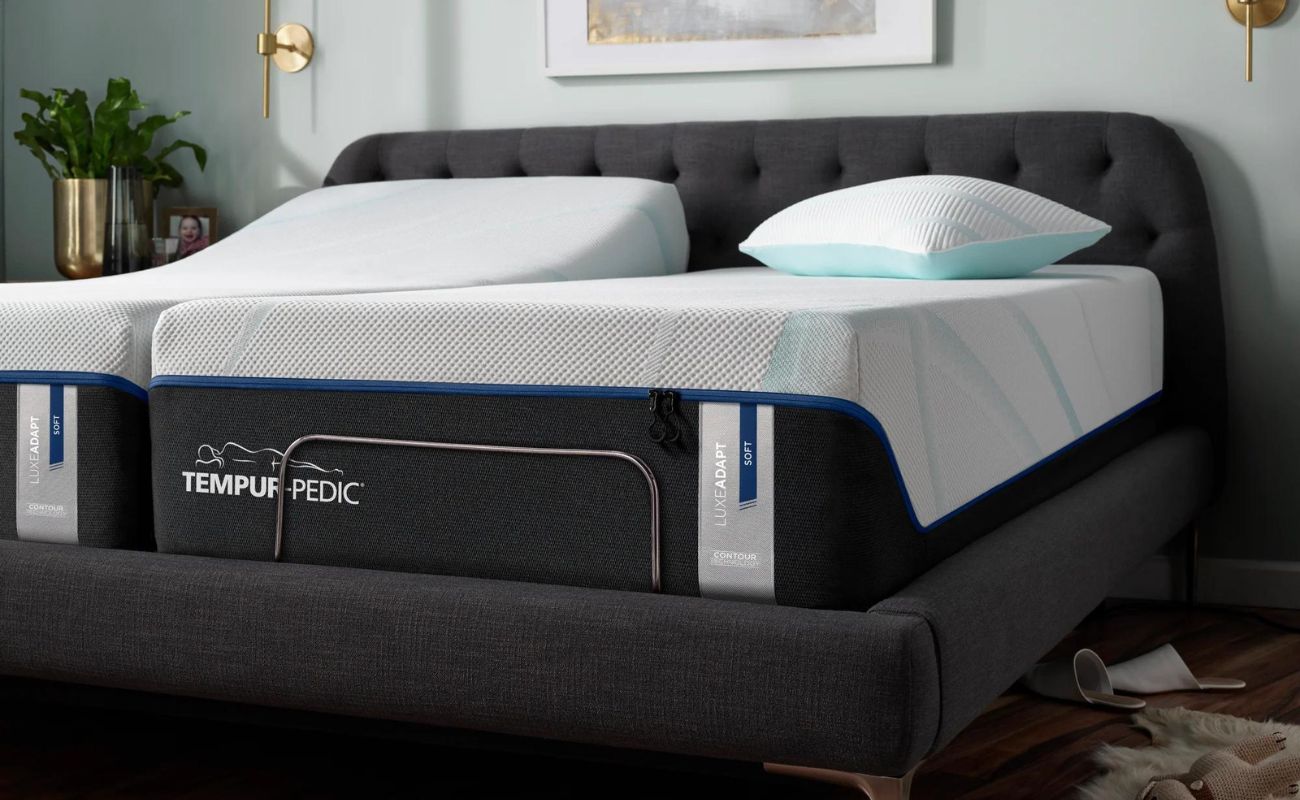

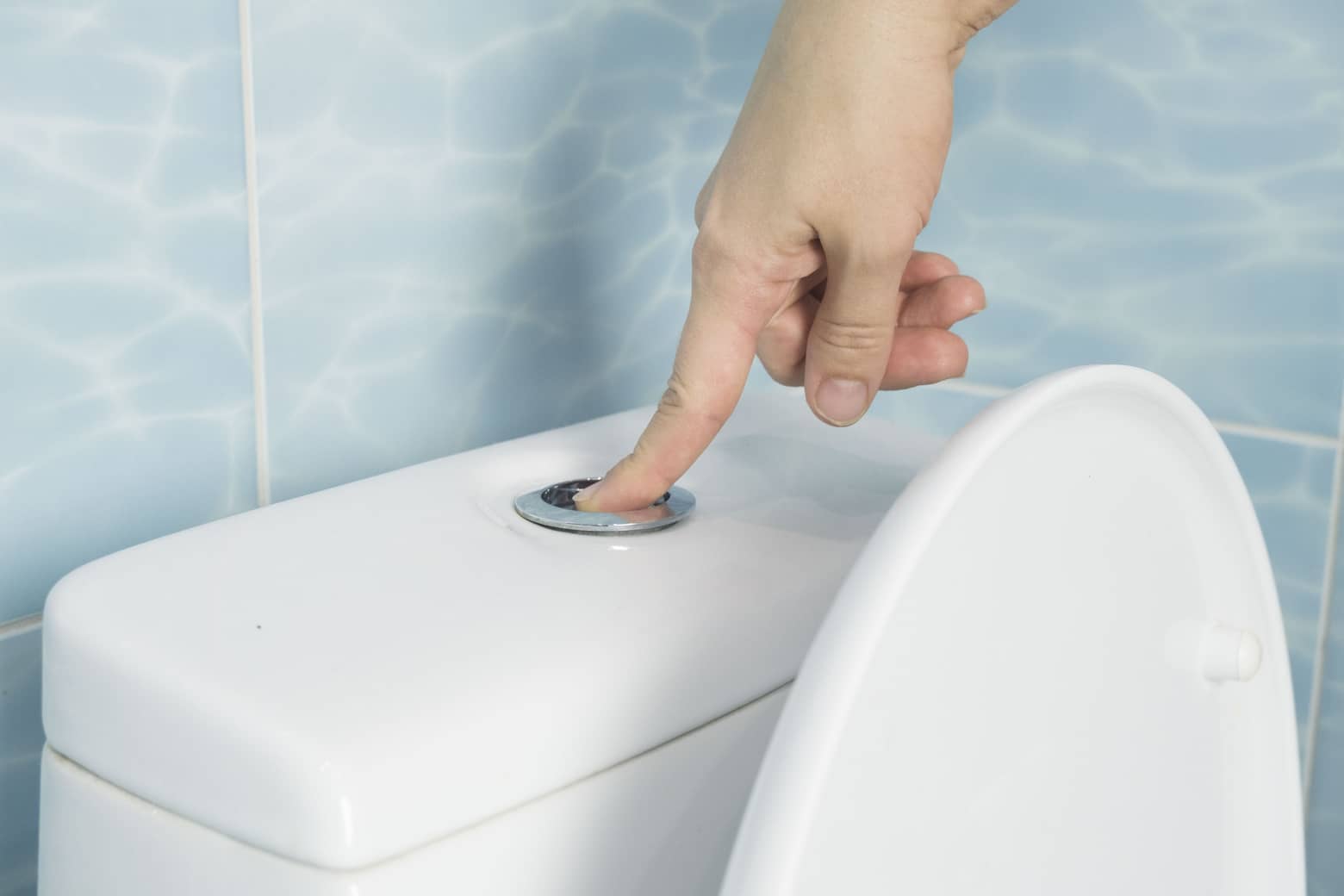

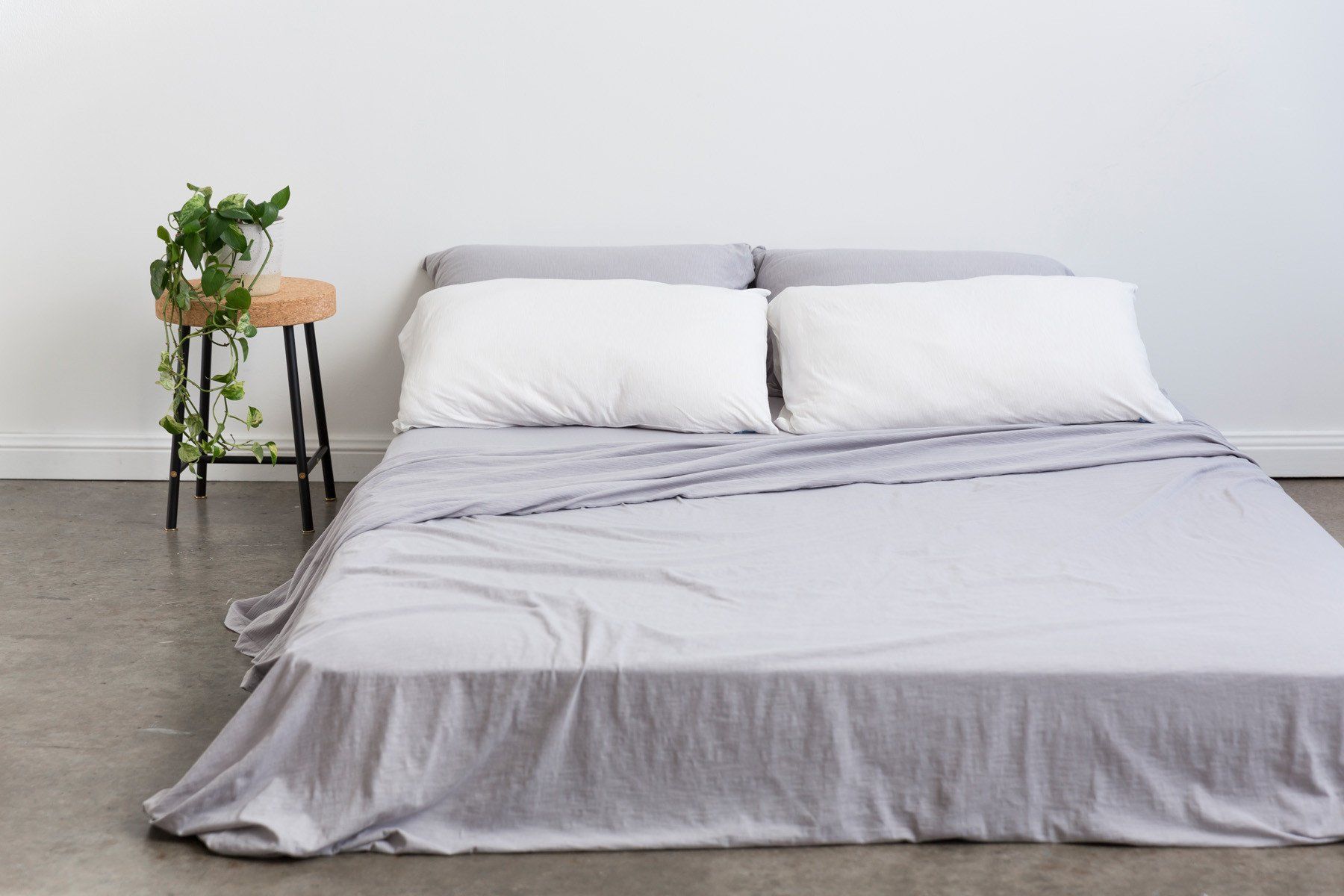

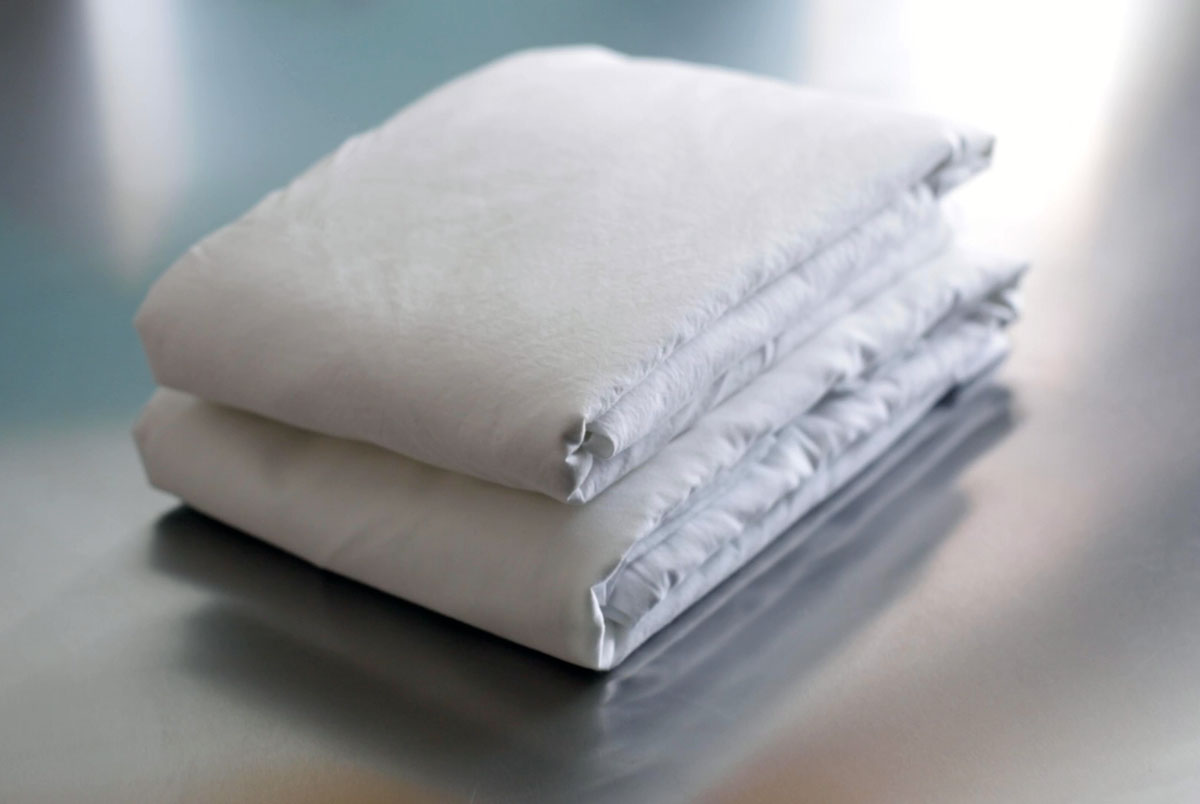
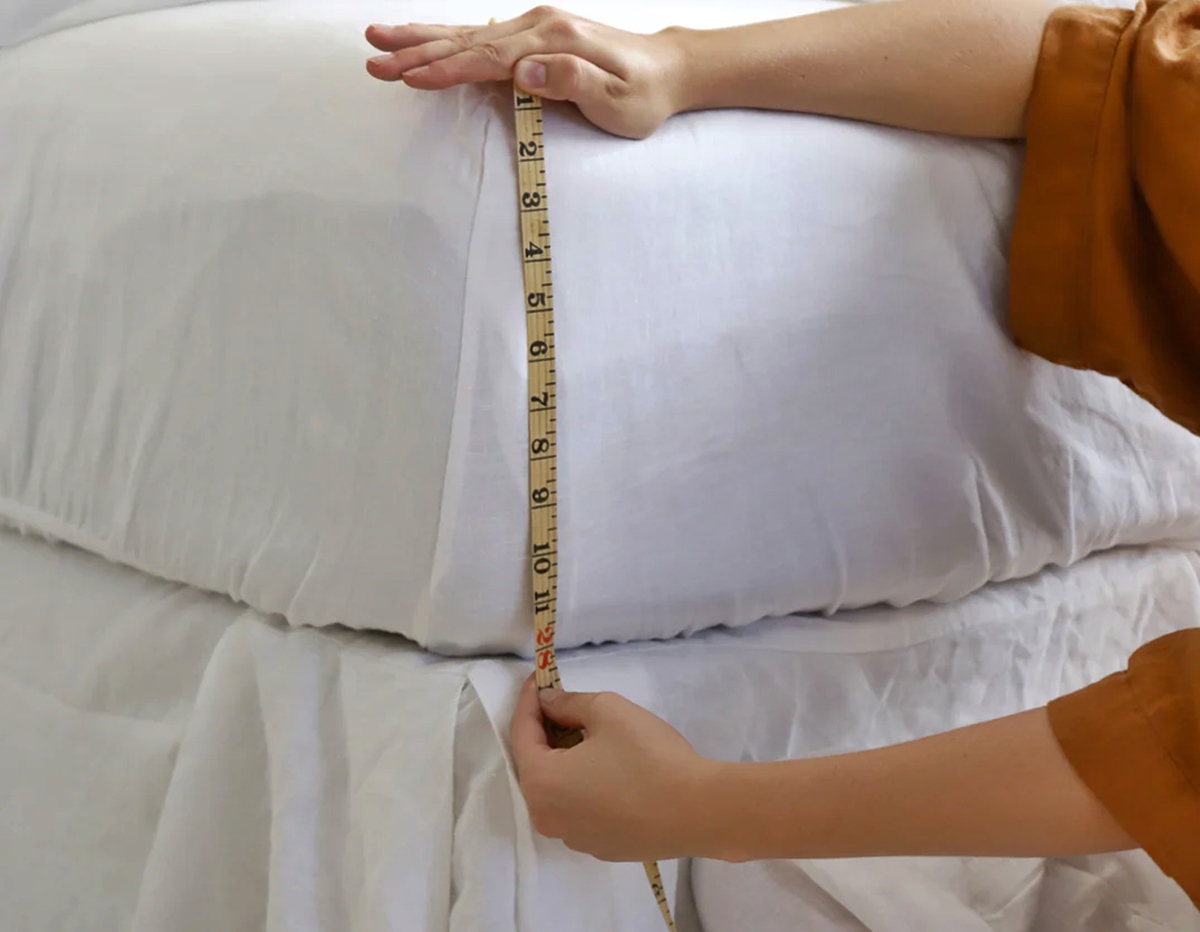
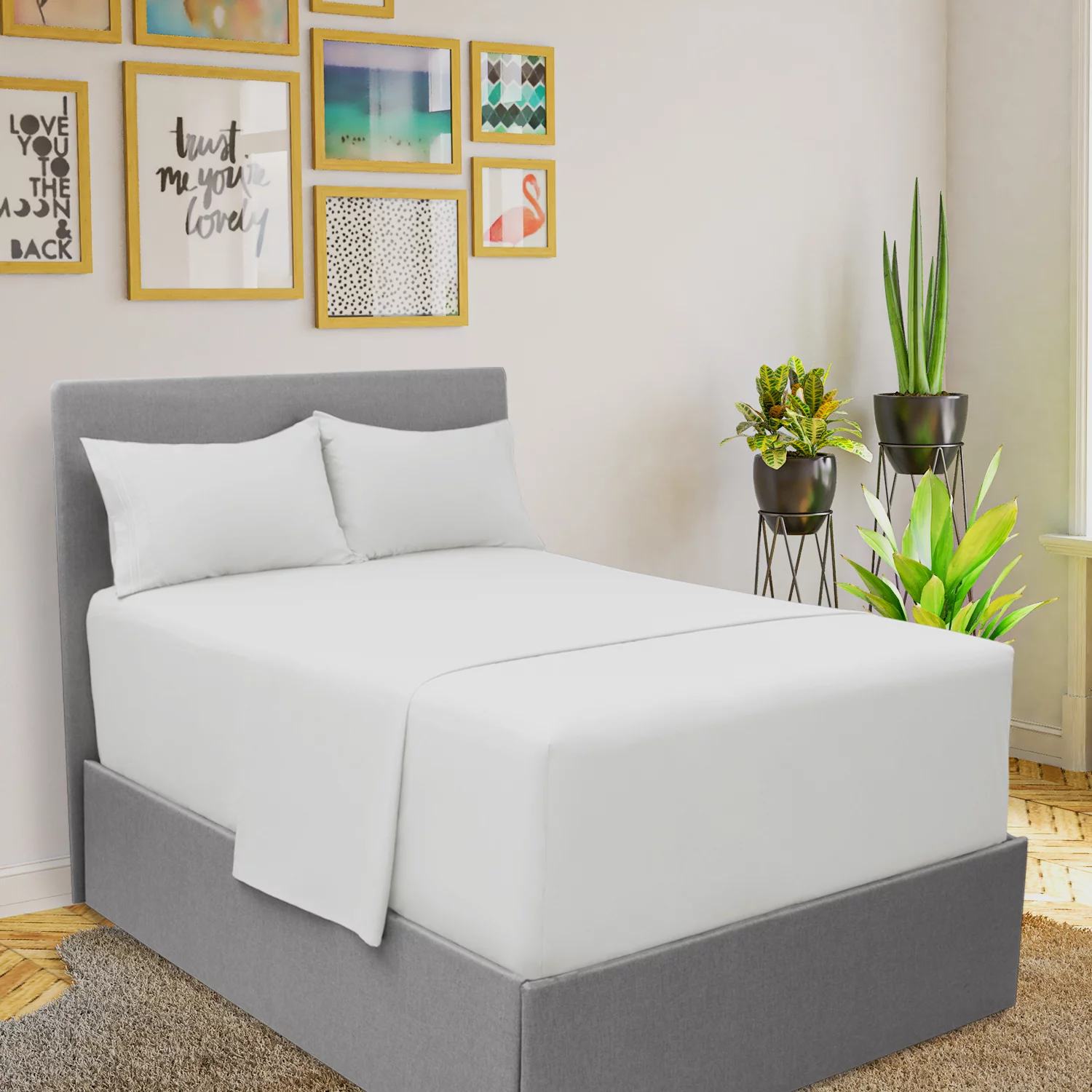

0 thoughts on “Where Does The Tag On A Fitted Sheet Go”